Bruce Gary, long considered one of the music world’s most endearing and groovy characters, grew up in the early ’60s in the west San Fernando Valley, not far from Malibu, “The popular music of my peers at that time was a wonderful combination of guitar, keyboards, bass and drums called surf music,” he said in a 2002 interview. “Somehow it perfectly reflected the carefree times of my youth. I started playing drums when I was six years old. The first proper band I played in was called The Watchmen. I was eleven. We cut our teeth playing music by such artists as The Ventures, The Beach Boys, Dick Dale & The Del-Tones, The Surfaris, The Astronauts, The Wailers, and many more bands of that nature. We enjoyed a healthy dose of playing local parties and youth centers in the Valley.”
Bruce Gary attended Taft High School in the San Fernando Valley, and after tenth grade went to the Monterey International Pop Festival in June 1967. At age sixteen he left home and moved into Topanga Canyon. “There was a very fertile music community there which allowed me to further my ambitions of being a successful working musician. It was there that I was fortunate to hook up with blues guitar great Albert Collins. This began a four-year trek of touring throughout the United States. It marked the beginning of my career as a professional drummer.”
In 1969 his surf band opened for The Kinks at Pierce College. Starting in the late 1960s and continuing through the 1990s, Gary studied, observed, and took drum lessons from Louie Bellson, Buddy Rich and Freddie Gruber. In the ’70s he played on numerous albums for in-house Capitol Records producers. Later in that decade Bruce played drums on albums by Alex Harvey,Giants, and Roderick Falconer, produced by Peter Ivers, before he helped equally create and shape the sound for the multiple platinum, Mike Chapman-produced Knack debut album, The Knack, in 1979.
“During our club break-in period we rehearsed daily at an old storage complex in Hollywood,” Bruce explained. “Our guitarist brought in a song he was working on, which eventually became ‘My Sharona.’ He wanted it to feel similar to the Miracles’ hit, “Going to a Go-Go.” As we rehearsed it, I had the idea to inject a sort of surf beat formula—all flams. A flam is when you hit the drum with both sticks at the same time but slightly apart. This gives you an echo effect… a very surf-like formula.” That approach helped make “Sharona” a worldwide #1 hit in 1979.
“When I first played with Bruce in 1973, my musical stature took a nosedive as I realized I was playing with a true great. His combination of grooves, polyrhythmic beats, rambunctious fills, and a kinetic energy that could light a city block, gave me a new standard to aspire to. I could never have imagined that I would be sharing the stage with Bruce Gary in 1979, playing Carnegie Hall to a sold-out crowd, with our single, ‘My Sharona,’ being number one all over the world,” remembers Prescott Niles.
For the “My Sharona” recording session, Bruce used his 1967 Ludwig drum kit, and a Zildjian cymbal formerly owned by studio session master and “Wrecking Crew” member Hal Blaine, an item he had purchased at a musical charity auction in 1971. Just after the “My Sharona” recording date, Bruce Gary began endorsing Gretsch Drums and remained with the company as a clinician from that time forward.
Ironically, branded as Bruce Gary was with the Knack tattoo and membership in a chart topping global rock and pop band, his fans, friends, followers, and especially the music media, writers and magazine editors for dozens of years, never really could comprehend and acknowledge the countless other viable and memorable performance and studio activities Bruce actually achieved in his lifetime.
This was especially true of his determination and Phoenix-like medical rebirth. All through the 1980s he dealt daily with a life-threatening case of rheumatoid arthritis, gulping down the strongest prescription anti-inflamatories, and against the odds, emerged once again as an active drummer and record producer. He navigated a thyroid condition for two decades, and some slight hearing problems in this century. For nearly fifty years he walked and gigged around town—and occasionally the rest of the world—with a pair of 7A drumsticks in his back pocket at all times. “He had rheumatoid arthritis, the worst kind, but when the music started, no one would ever know it,” explained Helen Gary. “Nothing affected his music. In his rehearsal room in summer, 2006, with guitarist Randy Zacuto, they played for over three hours, and Bruce never missed a beat.”
In 1997 Bruce received a phone call from another music industry friend, musician David Carr, who told him that Ventures drummer Mel Taylor had passed away suddenly and they needed a replacement for their annual tour of Japan. Mel had become a good friend in previous years and Bruce was told that he had requested him to do that while he was in hospital recovering from what was initially thought to be pneumonia. “The experience of playing twenty-four concerts with The Ventures in Japan was amazing,” Bruce enthused later. “I felt like I had come full-circle. What a thrill!
“At the time,” Bruce continued, “the third set of Beatles Anthology had just been released. I had an idea for the band. I’d brought with me a tape of an early Beatles recording called “Cry for a Shadow,” an instrumental song written by John Lennon and George Harrison during their early Hamburg days, which mirrored the Ventures’ formula. It was the Beatles’ tribute to a popular British band called The Shadows, a very Ventures-like combo. Amazingly, the Ventures hadn’t ever covered that one.
“My idea was for the band to record the song in Tokyo and rush-release it there to tie in with the Beatle-wave (no pun intended). The band was up for it, but unfortunately their record company wasn’t. When it came time to record their annual album in L.A., they remembered my idea and gave me the honor and thrill to produce the track. Ventures keyboardist David Carr played Mellotron for that Beatlesque touch. The recording was issued on a CD called New Depths.”
Bruce Gary is also documented as a producer on 2002’s The Ventures Play the Greatest Instrumental Hits of All Time, and as drummer on The Malibooz’ CD, “Beach Access”, released the same year.
Bruce also had the ultimate regional and karma escrow distinction of jamming with Jimi Hendrix at a Sunset Boulevard music club called Thee Experience in 1969, when the guitarist sat in with the Bonzo Dog Band’s encore number, “Rockaliser Baby.” Bruce worked extensively with the Hendrix archives and produced The Jimi Hendrix Reference Library for Hal Leonard Publishing Company. Under the auspices of producer Alan Douglas, he also co-produced a series of posthumous album releases from Jimi Hendrix that included the popular Blues collection.
Working with engineer Dave Kephart, Bruce Gary produced and compiled Jimi Hendrix “Live & Unreleased” – The Radio Show for the nationally syndicated Westwood One radio service, and he was also a production consultant on Westwood One’s weekly broadcast series, The Lost Lennon Tapes.
Bruce Gary is acknowledged or thanked in dozens of books, including Neil Young: Reflections in Broken Glass, by Sylvie Simmons (MOJO Books, 2003); Arthur Lee: Alone Again Or, by Barney Hoskyns (MOJO Books, 2003); and two volumes by Harvey Kubernik, This Is Rebel Music (2004) and Hollywood Shack Job (2006), both published by the University of New Mexico Press.
The famed drummer produced and played on a selection for an all-star John Lee Hooker tribute CD. He was behind the skins with a late 1970s version of Arthur Lee and Love, and recorded with the sound pioneer. His name can be found in the credits on several other albums, including Just Yesterday by Al Stewart, and Emmett Chapman’s Parallel Galaxy. In 1978 Bruce played on recording sessions with John Locke, Phast Phreddie, Harvey Kubernik,Chris Darrow, Dan Kessel, David Kessel, and Kim Fowley.
Bruce Gary toured and recorded with Cream bassist Jack Bruce as a member of the Jack Bruce and Mick Taylor Band. At that time Gary, along with Bruce, met Bob Marley in Jamaica, and jammed with him over a two-day period, a “music lesson” in which Marley helped Gary learn some vital reggae music techniques. Later, he visited a dying Marley at Sloan Kettering Hospital in New York. In 2003 Gary played drums on Jack Bruce’s album, Live at the Manchester Free Trade Hall.
He was the drummer on several tracks of John Hiatt’s Slug Line album, produced by music industry veteran Denny Bruce, who also hired Gary for his album with guitarist Albert Lee, Hiding. In 1977, Bruce Gary produced the debut Vox Humana EP. In the 1990s he provided a tambourine overdub on the movie score for George Harrison’s Shanghai Surprise soundtrack album.
He is also heard along with Jim Keltner on the historic but unreleased Record Plant recording session, Too Many Cooks, featuring John Lennon, Mick Jagger, and Jack Bruce, engineered by longtime Bruce Gary friend and confidant Jimmy Robinson, who later would record Bruce in numerous recording sessions, including a musical teaming with his childhood friend Randy California, of Spirit fame.
Bruce Gary sang with Spirit on their live concert video, on the song “I Got a Line on You,” and was a lifelong friend of Spirit’s Randy California, on whose 1982 album, Euro-American, Gary played drums. His work with Spirit included percussion and vocals on 1984’s Spirit of ’84 and Thirteenth Dream. He’s also one of the musicians listed on Mick Skidmore’s 2005 Spirit compilation, Son of America.
Bruce Gary subsequently worked with Jack Bruce and Andy Summers of The Police on a project called “Hot Flash.” In the spring of 2006, Bruce recorded over half a dozen tracks with keyboardist Irvin Kramer and bassist Warwick Rose in a southern California studio. Other endeavors include Bruce Gary’s Drum Vocabulary, a CD of drum loops and samples, produced by Steve Deutsch in 1995 and available through Big Fish Audio.
TRIBUTES
Bruce Gary’s massive resume and audio body of work includes recording sessions with Cream’s Jack Bruce, Rod Stewart, Sheryl Crow, Yoko Ono, Bette Midler, and Harry Nilsson. In the mid-’90s he even played a corporate event with the Jefferson Airplane in the Bay Area. He toured and gigged with Randy Meisner (Eagles), Spencer Davis, Fuzzy Knight (Spirit) and Denny Laine (Moody Blues, Wings) for private corporate functions. He also served as a technical advisor to actor Kevin Dillon, who portrayed drummer John Densmore in the feature film, The Doors, directed by Oliver Stone.
Jon Densmore
Los Angeles-born Densmore, of The Doors, himself a potent and highly influential drummer and percussionist, was a good friend of Bruce Gary’s for four decades. His Doors bandmate, guitarist Robby Krieger, recorded with Bruce on the albums Versions, Robby Krieger, and No Habla. “Feel,” said Densmore, “is everything to a drummer—how he or she swings. Bruce had the greatest feel. Not only that, he had the fastest bass drum in the west. He could do a roll with his foot. Drove me nuts. I will never catch up to Bruce’s right foot. He had touch. When he played fusion with Robby (Krieger) it was unbelievable. Technique is—thank God—not everything, although Bruce had it in spades with his feet. But the feel—that’s it, man. [Look at] Ringo. His feel is so good, even though he’s not a monster. It’s the heartbeat. I love the guy and I’m in shock. Right now I’m gonna play the sh*t out of my drums and help him with his crossing,” a mournful Densmore disclosed.
Jim Keltner
The legendary Los Angeles-based drummer Jim Keltner truly knew Bruce Gary for close to thirty-five years. Gary once played a live date in New Orleans with Bob Dylan, double-drumming with Keltner on a show number, “Heart of Mine,” from Dylan’s Shot of Love album. “Bruce was a little brother figure to me. Back when The Knack’s “My Sharona” was being played on the radio every ten minutes, he came over to my house one night, bounding up the stairs in a black turtleneck sweater, black jeans and Beatle boots, cigarette in one hand and a snare drum tucked under the other arm. Hands me the drum. ‘Happy Birthday, Jimmy!’ A Tama bell brass snare, the most expensive drum at that time. I had told him earlier that his snare sounded great on the record. So he brought me a new version of the one he used. I told him, ‘You shouldn’t have done that.’ ‘Hey man, I can afford it now.’ So, he was off and running and I was very happy for him.
“Bruce could always play and was a heavy hitter. He was slightly ahead of his time in that respect. He played very strong in a time when not everybody was doing that yet. He was there early with that. He always made his drums sound great. He didn’t overplay the cymbals. I always told him I never really liked hearing drummers play too many crashes all the time. Bruce was very much a part of our strong drum community. We’ve lost another brother.
“He was a great student of rock ’n’ roll and a tremendous archivist. Every once in a while he’d find film footage from decades ago, like a TV appearance of me on My Three Sons or a Hullabaloo show I did with Gary Lewis & The Playboys. And of course his work on the Jimi Hendrix album reissues was beautiful.”
Clem Burke
Blondie drummer Clem Burke added, “Bruce was one of the great drummers; his groove on the Knack recordings was a major contributor to the success ofthe band. Bruce was always a very upbeat guy and a versatile musician. I’m very sad to hear of his passing.”
Robbie Rist
If you were to ask drummer and multi-instrumentalist, poptastic fan and record producer, Robbie Rist, he’d say his favorite musician and the greatest influence on his own musical sensibilities was Bruce Gary. Once a child actor (playing Cousin Oliver in the last season of The Brady Bunch), and now a San Fernando Valley studio owner, Rist, like Gary, was a product of Woodland Hills and Taft High School, and is still totally proud of his California 818 roots music heritage. A 1978 Knack Troubadour show was a monumental experience in Rist’s budding musical plans as a young teenager. And in 2005, Rist was one of the on-camera interview subjects in the documentary DVD, Getting The Knack.
Steve Deutsch
“Bruce has left a lasting mark on pop music with his signature drum style, which reflected his ever-youthful exuberance in life,” offers Steve Deutsch. “That spirit will live on with all who knew him and loved his drumming. And I believe that if there were anyone who might joyfully navigate the afterlife, whether to first search out Lennon, or the face on Mars, or his dad, it would be Bruce Gary!”
Randall Zacuto
“Bruce and I were truly musical soulmates,” says guitarist Randall Zacuto. “I was his longest and oldest friend and had known him for forty years. We were like two parts of one person when we played. Even when it was just the two of us playing, it sounded like ten guys. We played together about a month ago. I was the last person to play with Bruce. Even though he was terribly ill, it was as if time had stood still for thirty years. It was just magic, flawless. He played until his hands bled.”
Dennis Dragon
“Bruce had the fastest foot in the business.” So says drummer Dennis Dragon, who produced countless early 1970s recording sessions with Bruce and Randy Zacuto for filmmaker Hal Jepsen’s surf music movies and soundtracks, including Go for It.
Laurence Juber
On the Fritz, the NBC late night series starring Fritz Coleman, had Bruce as the house drummer for the season-long run of the show with guitarist Laurence Juber. Bruce was a fixture at the Tuesday night jams at the Central (now the Viper Room) in the mid-’80s with Nicky Hopkins, Tim Bogart and others. “Bruce was always my ‘go to’ drummer if I needed a rock’n’ roll Buddy Rich style of playing,” Juber mentions. “He was a powerhouse, virtuoso player with a driving shuffle feel. One time I watched him recording at Sunset Sound with Albert King. The blues legend was working up a good head of steam, taking out his aggression on Bruce. He handled it like the pro that he was, and laid down a tight groove that produced some inspired playing from Mr. King. The last time we played together was at my wife Hope’s birthday party. At the end of the evening, John Mayall sat down at the piano, while I played acoustic guitar. Bruce grabbed a phonebook and some brushes and joined us for an acoustic ‘power trio.’”
Martin Lewis
Martin Lewis, host of a daily radio show on “Little Steven” Van Zandt’s Sirius Satellite Radio channel, “Underground Garage”, points out “the contradictions in Bruce himself. He looked as tall and stick-thin as the average Brit rocker – yet his personality was as warm, cozy and “haimishe” as your favorite Jewish grandmother… With a mischievous twinkle. Keith Richards exterior – Ruth Gordon on the inside.” Lewis sums Bruce Gary up as “that rarest of people: A musician AND a mensch. Elvis and chicken soup in one package.”
Cherie Currie
“Through all the incomprehensible grief, I have to smile when I remember the first time I met Bruce,” volunteers author, actress and artist Cherie Currie, former lead singer of The Runaways. “It was 1980 at Capitol Records when I was an artist there and The Knack were at the top of their game. He walked in with a smile that lit the room and I asked to be introduced to him. He was by far the most down to earth, lovely man, and he didn’t have to be, when most with his star status were not. He was the poster child of graciousness. He has graced me with the gift of his friendship ever since, and a love I will never forget.”
Al Kooper
Record producer, singer and songwriter Al Kooper remembers, “Bruce Gary played on a few tracks on my Championship Wrestling album in 1983 and did a great job. He was the right man for the job. It is sad that the Lord took him so early.”
Spencer Davis
“Words will never describe how I miss him,” concludes bandleader Spencer Davis of the trend-setting Spencer Davis Group, one of Bruce Gary’s favorite bands. “He is my mate—I know one day I will see him again.”
Prescott Niles
“Bruce Gary was more than a friend, a drummer, or a cruising buddy; he was a life force with unbridled energy, who was more than happy to put you on his back and lovingly take you along. He gave more than ever did he get in return, and now is our time to thank, cherish and, in loving tribute, let Bruce know (in the great Ethernet above) just how much he meant to all of us as a person, and as a f***in’ great drummer! Bruce, I love you and thank you for carrying me on your back to the greatness and excellence that you gave me a chance to share with you.”
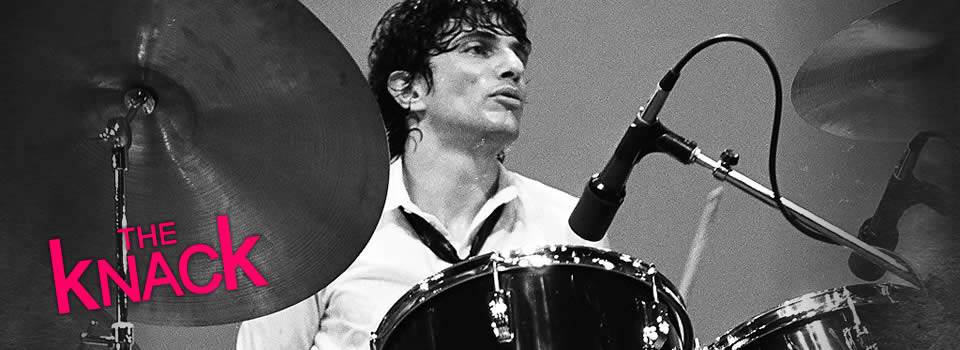
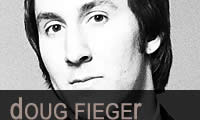
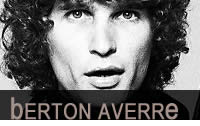
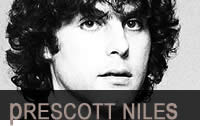
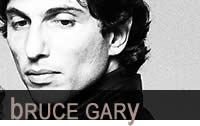
Connect With Us!